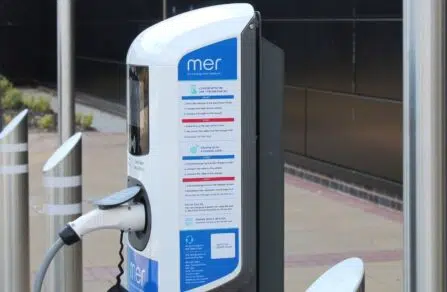
EV Route Planning Can Simplify Last Mile Fleet Electrification
EV route planning can give fleet managers the confidence to intro...
In this blog: Driving an EV in hot weather | Charging your EV in hot weather
In the UK and across the world, we are experiencing increasingly high – and sometimes extreme – temperatures.
Last July, the UK reached a new record in Coningsby, Lincolnshire, where temperatures reached 40.3°C – the highest temperature ever recorded in the UK to date.
In June this year, the average monthly temperature was 15.8C, which exceeded the preceding highest average June temperature by 0.9C.
How will this hotter weather affect EV drivers?
The short answer is – yes! However, there are a few things you can do to maximise safety and efficiency when driving and charging your EV in hot weather.
During the summer months, you may notice your EV’s range is affected by the high temperatures. An overheated battery can reduce an EV’s range.
There are several things you can do to help improve your EV’s range. This includes driving gently and avoiding accelerating harshly, using your air conditioning mindfully, and driving in ‘eco’ mode if your EV model enables it. Check out our recent blog on range anxiety for a deep dive into EV range and our tips for maximising it.
Lithium-ion batteries perform best between 20-25°C, whilst higher temperatures can result in decreased range and may lead to battery damage.
Simple things, such as parking your EV in a shaded spot and driving your EV at a time of day when the weather is not at its hottest (usually between midday – 2:00pm) will help protect the EV’s battery when temperatures soar.
This is an essential part of driving an EV no matter the weather conditions. Under or overinflated tyres can affect tyre grip, braking and rolling distance, tyre lifespan and fuel consumption.
However, in hotter weather, these dangers are exacerbated. On an average day, friction and resistance result in a build-up of heat inside car tyres, but hotter weather increases pressure. Every 10°C rise or fall in temperature affects a tyre’s pressure by between 1 and 2 PSI (‘pound-force per square inch’).
Your EV may have built-in tyre pressure monitoring system, which will warn you if the pressure is too low. Or, checking your tyre pressure manually will ensure you are able to drive safely during these hotter months.
It is well known that EVs should not be charged above 80% or reach below 20%, to help preserve the battery for longer.
Do not be tempted to charge your EV’s battery to 100% during warmer temperatures, in the hope it will help with range. You may cause the battery to overheat, or cause cell degradation in the battery, meaning it cannot charge your EV at the usual rate. If your EV’s battery overheats, its charging speed may decrease, or charging may stop completely. Leaving your EV parked in the sun can also result in loss of charge.
Instead, stick to the 80-20 charging rule and charge it when the weather is cooler (such as overnight, during the morning, or later in the evening).
The last thing EV drivers need to contend with is being stranded without enough charge to reach their destination in hot weather. Sitting in traffic or being on the road for longer than necessary increases the time the EV is exposed to the heat, meaning the chances of issues occurring also increases.
As a preventative measure, plan your route in advance, especially for longer journeys such as an EV road trip, so you know where you can charge on route. And, having a set route will mean you can get to your destination faster and thus you will not be wasting your EV’s charge unnecessarily.

EV route planning can give fleet managers the confidence to intro...

Looking to install EV charging infrastructure? Read our breakdown...

As more industries turn to electricity to accelerate their decarb...